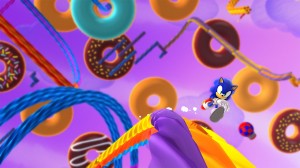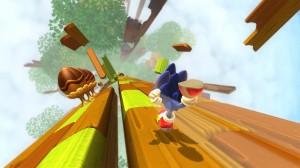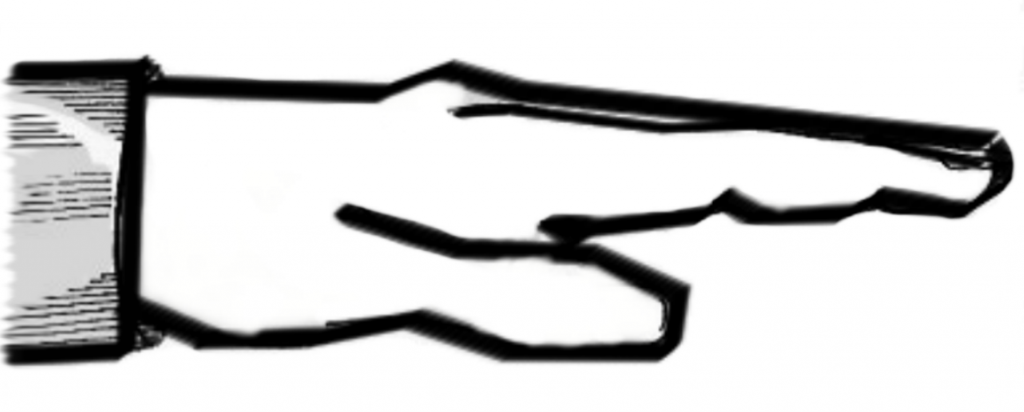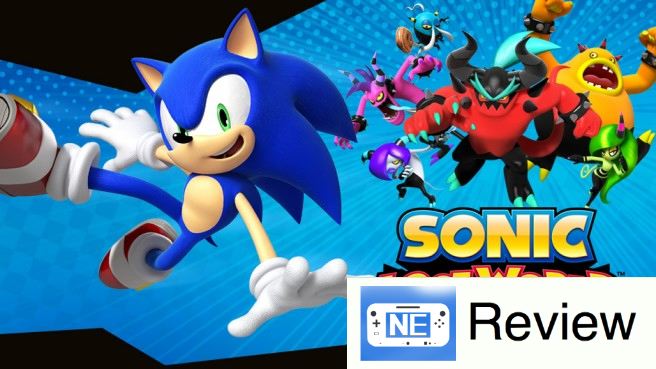[Review] Sonic Lost World
Posted on February 21, 2014 by Jack Johnson(@tupachologram96) in Features, Reviews, Wii U
System: Nintendo Wii U
Release Date: October 29, 2013 (NA) – October 18, 2013 (EU)
Developer: Sonic Team
Publisher: Nintendo/SEGA
Author: Jack
In a normative sense, Sonic as a platforming archetype ultimately aims to achieve one goal: create a constant chain of ephemeral pleasure via the utilization of perceived velocity the controllable gameplay object reaches in gameplay. While such a vision, an expanded AudioSurf if you will, perennially begets hedonistic intrigue, that seemingly one-dimensional objective for some dang reason hasn’t really ever come to fruition for Sonic Team over the past few console lifespans. A definite, tangible goal as such seems easy enough to reach, right?
Unfortunately, a granular obstacle to that simple speedy sentiment exists prohibiting fulfillment of that thought: the more the design team over at Sonic Team’s vision rides off in all directions (Sonic Unleashed’s Werehog levels being a prime example) as opposed to finding one meaning around which Sonic should revolve, the more plodding and forgetful each subsequent entry in the series gets. How can one ever hope to solve that ever-nagging dilemma?

Enter 2010’s Sonic Colors. Directed by Morio Kishimoto with the intention of de-sullying the hedgehog’s name (http://www.mcvuk.com/news/read/sub-standard-sonics-de-listed), the Sonic series finally felt like it again possessed a semblance of metacognition within the platforming genre. While Colors wasn’t aiming to stand out amongst notable contemporaries at large, it made dual attempts to both still be a Sonic game– still target a younger demographic and line up moment after moment of transitory grandeur– and be a “real” platformer with firmer control, progression within levels, and strong foundational intangibles, and succeeded in both fields.
Kishimoto’s awaited followup to the successful two million copy seller, last year’s Sonic Lost World, stays within the template he helped established in Colors, but extrapolates its predecessor’s voicings and goals to a marginally grander degree. Possessing both enough transience to still be true to the Sonic name and a continued and unabashed cognizance of market rationality for the modern age of platforming, Lost World is in sum a gratifying experience with the series’ prior decade in mind. Unfortunately, like its predecessor, Lost World still has easily discernible limitations, and when the doors close for school, it in sum doesn’t stand tall with contemporary titles targeted towards older audiences.

The most important characteristic needed to be recognized within Sonic Lost World is that it does possess that level of mindfulness present within recent professional titles like Rayman Origins and Super Mario 3D Land, a threshold lost amongst the ranks of the previous decade’s Sonic iterations. This trait is no more exemplified than in Lost World’s level sequencing.
Ranging from what would be considered the default level, a standard over-the-shoulder 3D Sonic level meets Mario Galaxy traversal of a 3D capsule-shaped mass floating in abstract space, to solid, anachronistic 2D levels attempting to harken back to Sonic’s glory days on the Genesis, to on-rails levels reminiscent of Donkey Kong Country’s mine cart levels, Lost World maintains an excellent atmosphere of change of pace and proper sequencing. While every variation possesses a blatant level of imitation to other aforementioned noteworthy titles, the ever-present gameplay element of speed and quick, fleeting environmental interaction make Lost World not feel as though it were a complete rip-off, but an inspiration and derivative piece.
Perceived velocity is highlighted rather well in the aforementioned Temple Run-esque behind-the-back on-rails levels. Constricting Sonic to, practically speaking, two-dimensional movement allowed for the gameplay object to fall to the realm of lower-level consciousness, allowing for the experience’s (seemingly) ancillary accoutrements of fantastical high-fidelity biomes and grand-sweeping orchestrals (many reminiscent of pieces like Mahito Yokota’s Gusty Garden Galaxy) of to actually take precedence as the controlled process in the brain; it was in these fleeting moments that Kishimoto’s vision took its firmest hold.

While Sonic: In the Lost World has some pretty excellent highs, the bulk of Lost World still unfortunately falls into the two butting dichotomies that represent the series’ upward bounds: an immature pastiche, this time in the form of the Deadly Six (the evil-doers at the end of each boss level that Sonic ultimately aims to defeat) versus a desire to be taken seriously, and the fundamental crossroads Sonic’s gameplay with the platforming genre in mind has always come to.
Regarding the former, it’s very hard to get immersed in sonically beautiful landscapes while a Saturday morning cartoon is on in the background. For the latter, as if it were a scalable spectrum, the faster Sonic the Hedgehog singularly runs along the ground, the faster concrete fundamentals crucial to the blueprint of a traditional linear platformer, such as level design, control palpability, and progression (you zoom by the dang thing before you even get to see it forcryingoutloud) simultaneously get run into the got dang ground.
Control of Sonic is very emblematic of this big, big natural schism Sonic Team wanted to remedy– how does one balance the jubilant feeling of Sonic running so fast as if he’s to lose control versus the deliberate, minute motions needed to be able to perform solid platforming executions? The answer came in the form of slightly rigid, slightly isometric movement, akin to how Super Mario 3D Land controls. Choosing to restrict Sonic’s lateral movement in the bread-and-butter, retro-Sonic floating kidney bean levels ended up a very wise decision as it defined linear spatiality in a three-dimensional plane without ultimately hindering it, allowing for clean, smooth, traditional Sonic-y lines of platforming (8-chain homing attacks, for instance), in addition to more methodical movement.

That wonderful insight divined by Kishimoto and Co. didn’t come without pratfalls, though. Like Sonic Colors, Lost World manifests both pleasurable transient sequences and real deal platforming levels, but ultimately excels in neither. Isometric movement presents a solution to the aforementioned existential platforming puzzle, but also limits Sonic’s “0-60mph” speed, thereby stifling some of the foundational organic joy emblematic of the series. In addition, the levels were still largely designed (as they should) in classic Sonic-minded fashion, meaning though Sonic had a greater propensity to control more like Mario, he never really did as the levels didn’t stimulate such thoughtful movement. From a certain perspective, though Sonic Lost World in many facets feels like a platformer that could potentially go toe-to-toe with other contemporaries as it once did in ages past, as a by product it can also feel like Sonic-lite meets Super Mario Galaxy-lite.

Can the two platforming philosophies– instinctual, volatile movement begetting rushful pleasure and precise movement begetting analytic profundity– ever coexist? Sonic’s critical success hinges upon a positive answer, and as it stands, it appears not. Had Lost World less ambition to be a grandeur multifaceted platformer and been more focused and two-dimensional in philosophy, perhaps it would have been a stronger experience.
“It never pays to be second-best in anything.” — Jack Reacher

For kids ages 8-12 and diehard fans of the intellectual property, Sonic Lost World is a no-doubter; for $30, you get 10+ hours of pseudo-validation and 28+ levels of the most thoughtful design philosophy the series has possessed since Bill Clinton was still in his first presidential term. For critical fans of the platforming genre, however, Sonic Lost World doesn’t match the singular highs a cornucopia of other current franchises, even independent ones, present. I’d consider other options first, unless you can steal a copy from a store. Do it. It really isn’t that bad.
Want to participate in more NintendoEverything goodness?
Try our Facebook page!
Or our Twitter page!
